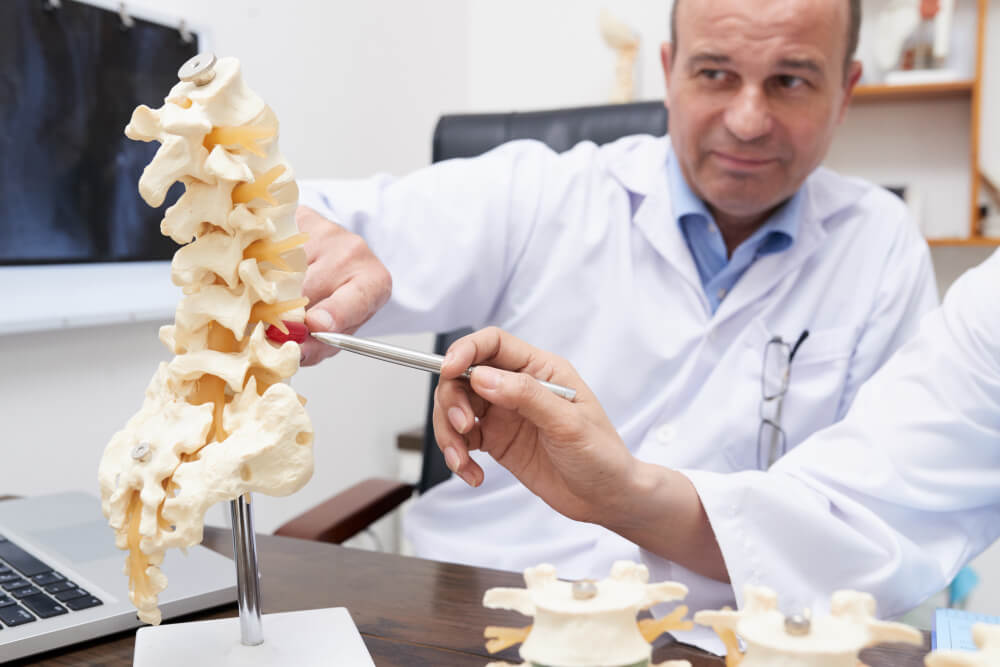How Spinal Stenosis Symptoms Progress and Treatments Offer Hope
Imagine your spine as a bustling highway, where nerves carry vital messages between your brain and body. But when the lanes narrow due to spinal stenosis, these messages face a bottleneck, leading to a cascade of symptoms that can gradually disrupt your daily symphony of movement and well-being. Understanding how these symptoms progress over time and exploring the available treatments empowers you to navigate this journey with informed choices and renewed hope.
The Slow Fade: Recognizing the Early Whispers of Spinal Stenosis
Spinal stenosis often develops gradually, making it crucial to pay attention to subtle changes:
- Pain: Back pain, often radiating down the legs (sciatica), is a common symptom, worsening with activity and improving with rest.
- Numbness and Tingling: Numbness, tingling, or weakness in the legs can occur as nerve pathways become compressed by the narrowed spinal canal.
- Muscle Weakness: Difficulty walking, climbing stairs, or lifting objects can arise due to weakened muscles affected by nerve compression.
- Bowel and Bladder Issues: In severe cases, control over bowel and bladder function can be compromised.
The Murmuring Crescendo: How Symptoms Progress Over Time
The pace of symptom progression varies, but generally, without intervention, they can worsen:
- Increased Pain and Discomfort: Pain can become more intense and persistent, limiting daily activities and impacting sleep.
- Loss of Mobility: Difficulty walking, climbing stairs, or standing for extended periods can significantly reduce independence.
- Balance Issues: Increased risk of falls due to impaired balance and coordination.
- Emotional Impact: Chronic pain and disability can lead to anxiety, depression, and decreased quality of life.
Restoring the Flow: Treatment Options for Spinal Stenosis
Fortunately, a range of treatments can help alleviate symptoms and improve quality of life:
- Non-surgical Therapies:
- Physical Therapy: Strengthening and stretching exercises can improve flexibility, reduce pain, and enhance balance.
- Pain Management: Medication like nonsteroidal anti-inflammatory drugs (NSAIDs) or nerve pain medications can provide temporary relief.
- Steroid Injections: Injections around the affected nerve roots can reduce inflammation and pain.
- Surgical Interventions:
- Laminectomy: Removing a portion of the bone and ligament compressing the spinal canal creates more space for nerves.
- Spinal Fusion: In some cases, fusing vertebrae together can stabilize the spine and relieve pressure on nerves.
Finding the Right Path: Choosing the Best Treatment for You
The optimal treatment approach depends on the severity of your symptoms, your overall health, and your individual goals:
- Early Stages: Non-surgical therapies like physical therapy and pain management are often the first line of defense.
- Moderate Stages: Steroid injections or minimally invasive procedures may be considered.
- Severe Stages: Surgery may be necessary to address significant nerve compression and restore mobility.
Beyond the Procedure: Living Well with Spinal Stenosis
Regardless of the chosen treatment, adopting healthy lifestyle habits can optimize results:
- Maintaining a Healthy Weight: Excess weight can put additional strain on the spine.
- Regular Exercise: Staying active within your limitations helps maintain flexibility and strength.
- Smoking Cessation: Smoking can worsen pain and impede healing.
- Stress Management: Techniques like yoga or meditation can help manage pain and improve well-being.
Conclusion:
Spinal stenosis may present a challenge, but understanding how symptoms progress over time and exploring the available treatments empowers you to take control of your journey. By collaborating with your doctor, choosing the right treatment, and adopting healthy lifestyle habits, you can navigate the whispers of time, alleviate pain, and reclaim your quality of life. Remember, with proactive management and a positive outlook, you can rewrite the narrative of spinal stenosis and orchestrate a life filled with movement, joy, and renewed hope.


